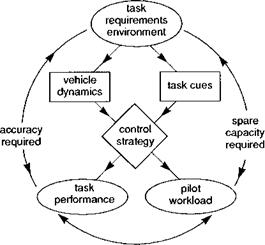The Subjective Assessment of Flying Quality
Opinion on what constitutes quality when it comes to flying has been demonstrated over the years to be wide and varied amongst pilots, and will undoubtedly continue to be so. Individuals can have different preferences and achieving universal agreement over all aspects of quality is probably unrealistic, and perhaps even undesirable. Fortunately, pilots, like most of the human race, are exceptionally adaptable and can learn to use someone else’s favourite flight vehicle very effectively. If we consider flying quality to be valued in both aesthetic and functional terms by pilots, then by far the most effort has been expended by flying qualities engineers on trying to establish a consensus regarding functional quality. This effort has received considerable leverage through the development of mission-oriented or functional flying qualities criteria. Prior to this, over several decades, the merging of functional values with aesthetic values has led to flying quality being a ‘nice to have’ attribute rather than essential for achieving safety and performance. The importance of aesthetic quality is recognized, but treating this aspect is beyond the scope of this engineering text. The emphasis with mission – oriented flying qualities is the ability to perform a defined set of tasks with temporal and spatial constraints, and what better test of quality than flying the tasks themselves. When flying a task, or to use the parlance of ADS-33 (Ref. 7.1), an MTE, the pilot will adopt a control strategy to maximize performance and minimize workload. Control strategy may vary from pilot to pilot, reflecting the complex network of influences on how different pilots elect to use their controls. Figure 7.1, taken from Ref. 7.2, illustrates the point. The task requirements in a given environment will determine the accuracy and spare workload capacity required; McRuer has described this through the dual concepts of attentional demand and spare control capacity (Ref. 7.3). Landing a helicopter on the deck of a small ship may require considerable accuracy, and a pilot may well take his time to achieve a safe landing. Evading a threat may place greater demands on acting quickly than flying precisely. Whatever the drivers, the combination of vehicle response characteristics and task cues will determine the control strategy adopted by the pilot, which in turn will be reflected in the realized task performance and actual pilot workload. In making a subjective assessment of the flying quality, a pilot will need to take into account these interacting influences and then articulate his or her thoughts to the flying qualities engineer, whose job at this stage is to make changes for the better, if at all possible. It is the articulation and the associated interpretation of the pilot’s subjective opinion that underpins any successful development of flying qualities,
|
Fig. 7.1 The influences on pilot control strategy |
and it is hardly surprising that this activity has been ‘assisted’ by a wide range of different support tools including rating scales and questionnaires. One rating scale has achieved more universal acceptance than any other since it was first proposed in the late 1960s – the Cooper and Harper handling qualities rating scale (Ref. 7.4). In view of its importance to the subject and partly to highlight potential misuses, the next subsection will give exclusive coverage to this scale and the associated pilot handling qualities rating (HQR).












